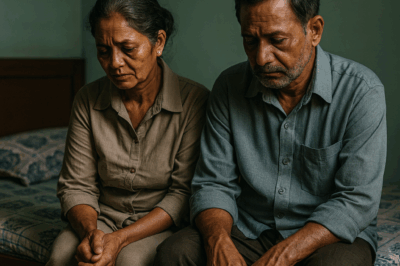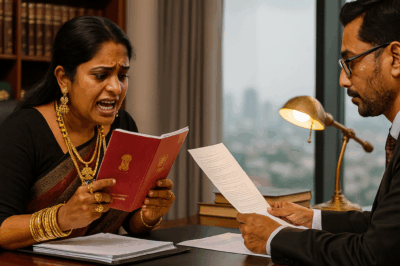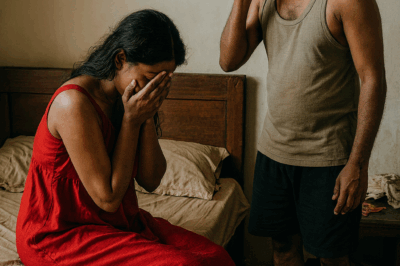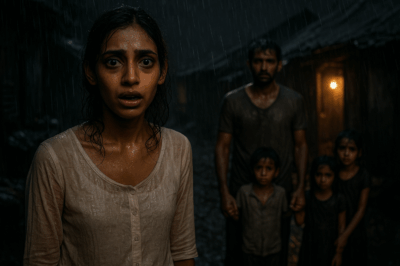In a peaceful countryside in southern India, where golden rice fields stretch under the sun and life flows gently along the riverbanks, lies the village of Anantpur—famous for its serenity. At the edge of the village rests a quiet family cemetery, where the grave of Dadaji Ram—who passed away twelve years ago—stood like a silent monument to a man loved by all.
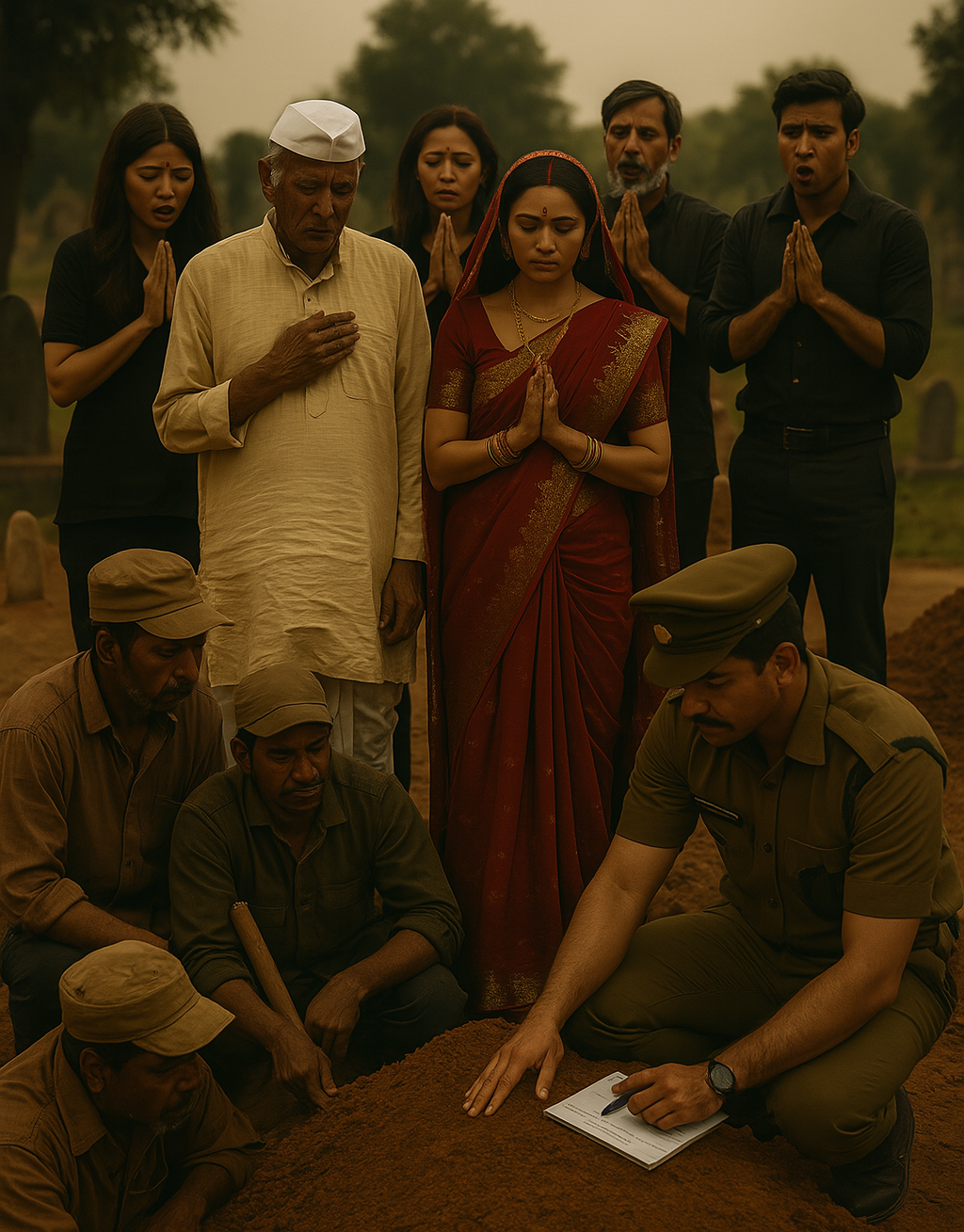
Dadaji Ram was no ordinary elder. He was a storyteller, a keeper of secrets, and a firm believer in the power of curiosity and courage. His tales of adventure and wisdom nourished the minds of the younger generation, though many dismissed them as fictional.
For many years, his grave remained modest—a simple mound of earth marked by a weathered stone plaque. But one damp morning, when Manav, the youngest grandson, visited the family plot to clean up, he noticed something strange. The grave seemed… taller. The earth was bulging higher than he remembered, and a faint crack ran along one side, as if the ground was being pushed up from beneath.
Manav dismissed it, thinking his memory was playing tricks on him. But soon, whispers began to spread in the village.
“Dada Ram’s grave is growing,” some murmured—half in jest, half in concern.
As the months passed, the changes became undeniable. The grave wasn’t just getting taller—it was also expanding, as if something beneath the surface was shifting. The family, caught between confusion and unease, gathered to discuss the situation. Manav’s mother, Meena, chalked it up to rain and loose soil. His uncle Raghav, however, was not so sure.
“What if it’s a sign?” he whispered warily.
The elders argued, the younger ones joked—but the mystery gnawed at everyone’s mind. Eventually, the family sought permission from the village council to exhume the grave early, hoping to uncover the truth while preserving their respect for Dadaji Ram.
On the day of the exhumation, the entire extended family gathered beneath a sky heavy with clouds. The air was thick with tension, and even the birds seemed to fall silent. As the first layer of soil was removed, Manav’s heart pounded.
Careful strokes uncovered the wooden coffin of Dadaji Ram. But what stunned everyone wasn’t the body—it was a second, smaller wooden chest buried deep beside the coffin, coated in mud and sealed with a rusted iron lock.
The family immediately notified the village authorities. In the presence of a local official, the chest was opened.
Inside were faded relics: a few old colonial-era rupee notes, a worn leather journal, some yellowed black-and-white photographs… and a thick envelope, marked in faded ink:
“For the one who opens my grave.”
Inside the envelope was a letter, handwritten by Dadaji Ram. Though it had been buried for over a decade, the script remained clear:
“My dearest family,” the letter began,
“If you have noticed something strange about this grave, then it means you have chosen to investigate. I left this behind not out of greed, nor superstition. I wanted to test the hearts of those who came after me—to see if anyone would dare to question what seems unusual, or if you would simply live your lives without asking why.
This chest holds memories of my life. But the real treasure lies not in these items—it lies in your courage and the unity you showed by coming together to uncover the truth.”
No one in the family spoke for a long time after reading the letter. A few shed tears—not from sorrow, but from awe at the lesson their grandfather had left behind.
It turned out the growing grave wasn’t supernatural at all. Dadaji had cleverly designed a simple mechanism: a buried chest placed deep beneath loose soil that, over time and with rain and nature’s touch, would cause the ground above to swell. It was a test—a puzzle to spark curiosity and bring the family closer.
The grave was rebuilt—grander and more dignified—with a new headstone engraved with the words:
“Here rests Dadaji Ram—the man who taught us to be brave in the face of the unknown.”
The chest and letter were preserved by the family—not for their material value, but for the wisdom they carried.
From that day forward, Manav’s family grew more united. They gathered often to retell the story of Dadaji and his unforgettable message. The tale spread through Anantpur, becoming a kind of local legend—a reminder that sometimes, the mysterious is not to be feared, but to be explored.
And in doing so, we may discover not only hidden truths—but the very soul of those we love.
News
At 61, I remarried my first love. On our wedding night, as I took off my wife’s traditional dress, I was startled and pained to see…
I am Arjun, 61 years old this year. My first wife passed away 8 years ago from a serious illness….
30 minutes later, my sister was stunned when our family called with news:
My younger brother, the youngest in our family, is only 37. Unmarried and without children, he just bought a piece…
Thinking my stay-at-home wife was a spendthrift, I pretended to go bankrupt to teach her a lesson. To my surprise, that evening she brought dinner to the table and made an announcement that sent a chill down my spine…
I’m a businessman, and my wife, Priya, stays at home to take care of our two young children. Every month,…
In the middle of the night, a son-in-law called his father-in-law and told him to take his daughter back and “re-educate” her. 15 minutes later, the father-in-law arrived with something that left his son-in-law speechless…
It was nearly midnight, with a light drizzle falling outside. In the cold living room, the atmosphere was as tense…
On the day I found out I was pregnant, his mother brought me 20 lakh rupees and told me to break up. I took the money and left without a word. Eight months later, I fainted in the delivery room when I saw…
I never thought that the doctor who delivered my baby would be my ex-boyfriend, Rohan. The child in my womb,…
A poor young woman gives shelter to a man and his four children on a rainy night — what he does next leaves her completely shocked and stunned…
That night, the rain poured down relentlessly. A biting cold wind whipped violently against the small, dilapidated house at the…
End of content
No more pages to load

